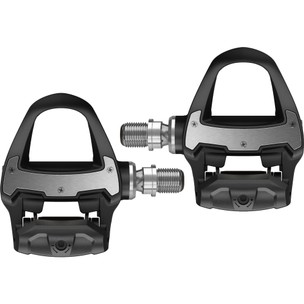Mechanics of Power Meters
Power meters have significantly revolutionized cycling in the way that they allow measuring the cyclist’s effort in terms of watts. The provided data is very precise so that they can be used to improve the quality of training, pacing in races, and analyzing improvements in fitness levels.
The Work Principle
The power meter measures the power output measuring the force that one applies, taken into consideration along with the pedal stroke velocity. Most of power meters consist of a strain gauge, which will deform slightly when force is applied and transmit the level of deformation into electric signals, and further into watts. The accuracy of power meters is on the level of ±1 to ±2 percent, which is high enough to rely on the data completely and have no doubts about the fact that the measured data will not be higher or lower than the actual one.
Installation and Calibration
The way in which a power meter is installed depends on its type . For instance, if the cyclist is using a crank-based power meter, he will have to first purchase the meter, then replace the crankset, or at least replace the standard crank arm, which is then connected to computers or smartphones . The calibration is required to adjust the temperature changes and the transport of the bicycle, so that before any ride takes place, the mechanic indicates the zero offset to account for temperature and the positioning of bike transport.
Example of the Usage in Training
Before a cycling time trial, an individual can apply a test using a power meter and the interval training. For instance, he/she will try to use 10-minute intervals on 300 watts on his/her trainer to develop the necessary race intensity level. This example can be used to manipulate with the watts level on shorter time intervals to better the endurance and the power, which are so important for the sprinters.

Advancements and Technology
One of the recent advancements includes a two-sided analysis where the cyclist can compare the result of the left and the right pedal stroke to adjust the intervals accordingly. Integration with cycling computers and smartphones helps to analyze the data on live.
Conversion of Force into Electrical Signals
Bike power meters are complex devices that convert mechanical force to electrical signaling. This is critical for power-training systems to accurately gauge wattage.
The nature of importance of strain gauges
Most bike power meters contain strain gauges, and they act as essential irregular pieces. These strain gauges will typically bind to some part of a bike that is directly affected by the force applied during pedaling or cranking. Basically, the bound portion tends to be the crank arm, the pedal, or the wheel hub. It helps that whenever a cyclist begins to pedal, a measurable force is generated propelling the strain gauge slightly out of shape. This change in the shape alters the resistance of the strain gauge, converting it into an electrical signal.
Converting to electrical signal
Deformation makes resistance change by a minuscule amount, but this tiny amount makes a massive difference in terms of the direct current flowing through the strain gauge. These have to be converted into an electrical signal by the power meter’s circuit. The signal is upscaled and analyzed via an algorithm. The result is an abstract representation of the wattage, which is shown on the cyclist’s phone or power meter in the form of watts.
For example, a cyclist wishes and is supposed to generate a consistent 300 watts during training. After beginning pedaling, the strain gauges begin to measure the force change altering the resistance readings. These values are instantly converted to an electrical signal that can be computed to show that the user has already generated 300 watts.
Before riding, the cyclist engages in a calibration known as a zero-offset. This is supposed to prepare the power meter to recalibrate the so-called ‘zero load’ status. Such pepperminting processes will help account for strain gauge changing due to variety of environments like heat and cold.
The Mechanics Behind Power Meters
Power meters for bikes offer immensely essential data for cyclists. They measure the power output directly out of the force the cyclists apply when peddling. This part will discuss how effectively these devices are working.
Understanding power meters
Power meters rely heavily on the use of strain gauges. The device is tiny and is attached with glue to the bicycle part, which is the site of bearing the force the cyclist applies. The locations are the crank events, pedals, or the rear witnesses. The strain gauges are very sensitive and can respond effectively to the deformation of the object. The deformation is converted to electrical operating resistance.
Converting deformation to a signal and a signal to a meaningful result
The second step of using a power meter involves detecting the deformation. Most power meters now use electronics to detect the errors. The resistances flow change with changes in pressure. The power meter has a digital circuit, which detects the change and processes the information. These changes are further converted to the reading of how many watts the cyclist is exerting at a particular time of cycling. As an example, let us examine the case of the interval training of a cyclist who wants to be exerting an average of 350 watts during each interval. During pedaling, the aeolians sensors are able to pick up every minor change the cyclist makes when adjusting their power to the target. If the power goes above the target, the cyclist is advised to reduce power which will be effectively executed. The process is connected to the cyclone peddles to the opportunities the cyclist is reducing when the device is in command. Some cleaning is useful.

Data Processing and Output
Power meters are capable of more than just measuring force . These devices heavily rely on their data processing and output abilities to enable cyclists to utilize their performance data.
From Electrical Signal to the Data
As the strain gauge records the deformation and converts it into an electrical signal, the power meter takes over the processing of data. A microprocessor in the power meter is responsible for converting analog signals into digital info . First, the power meter filters and amplifies the electrical signals they receive from the gauge to ensure the data’s accuracy . Then, the analog-to-digital converter digitizes the signals, making them available for processing.
Algorithms
The algorithms are the central part of a power meter’s data processing mechanisms. They calculate power output, using the formulas for torque and angular velocity . For example, if holding the crank of a bike, a cyclist applies 20 Newton-meters of torque while turning to pedal 90 times per minute . The power meter will calculate the resulting watts produced. The formula used for the calculations would be Power (watts)=Torque (Nm)×Angular Velocity (rad/s) . In the study’s example, watts = 20 × 2π × 90 ≈ 11,300 watts .
Real-Time Output to Devices
Once processed, power output data is usually transferred in real-time to cyclists’ devices, which are usually their smartphones or cycling computers, via Bluetooth or ANT+. They can then decide on their course of action based on the information they received. For example, if cyclists see that they produce 250 watts on a stretch of a road, they can pedal harder to bring the number up to 300 watts and effectively overcome the incline in the road. If they fail to react and produce just 250 watts, they may exhaust themselves and stop before reaching the summit, according to the principle that what comes up must come down.




